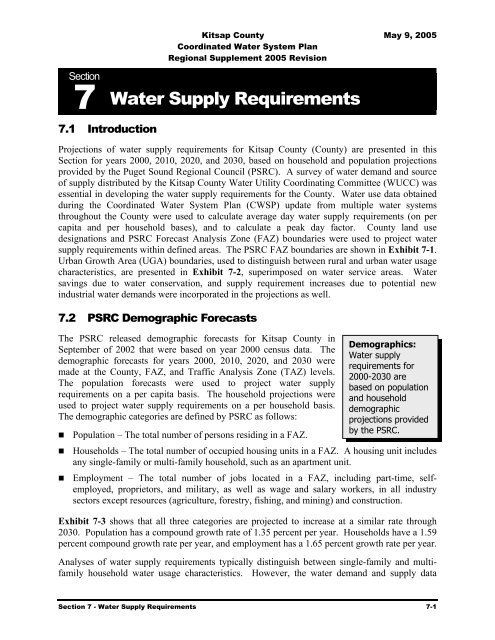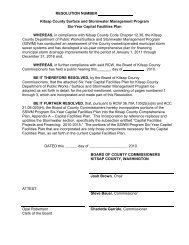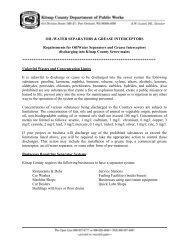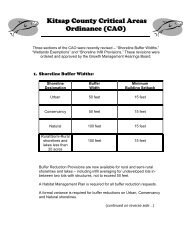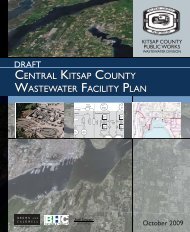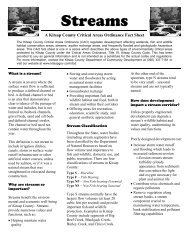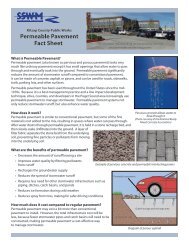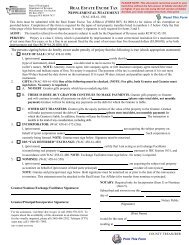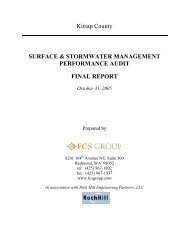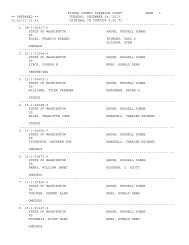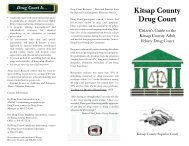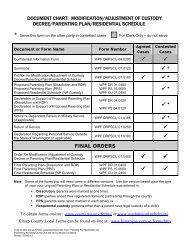Coordinated Water System Plan - Kitsap County Government
Coordinated Water System Plan - Kitsap County Government
Coordinated Water System Plan - Kitsap County Government
Create successful ePaper yourself
Turn your PDF publications into a flip-book with our unique Google optimized e-Paper software.
<strong>Kitsap</strong> <strong>County</strong> May 9, 2005<br />
<strong>Coordinated</strong> <strong>Water</strong> <strong>System</strong> <strong>Plan</strong><br />
Regional Supplement 2005 Revision<br />
Section<br />
7 <strong>Water</strong> Supply Requirements<br />
7.1 Introduction<br />
Projections of water supply requirements for <strong>Kitsap</strong> <strong>County</strong> (<strong>County</strong>) are presented in this<br />
Section for years 2000, 2010, 2020, and 2030, based on household and population projections<br />
provided by the Puget Sound Regional Council (PSRC). A survey of water demand and source<br />
of supply distributed by the <strong>Kitsap</strong> <strong>County</strong> <strong>Water</strong> Utility Coordinating Committee (WUCC) was<br />
essential in developing the water supply requirements for the <strong>County</strong>. <strong>Water</strong> use data obtained<br />
during the <strong>Coordinated</strong> <strong>Water</strong> <strong>System</strong> <strong>Plan</strong> (CWSP) update from multiple water systems<br />
throughout the <strong>County</strong> were used to calculate average day water supply requirements (on per<br />
capita and per household bases), and to calculate a peak day factor. <strong>County</strong> land use<br />
designations and PSRC Forecast Analysis Zone (FAZ) boundaries were used to project water<br />
supply requirements within defined areas. The PSRC FAZ boundaries are shown in Exhibit 7-1.<br />
Urban Growth Area (UGA) boundaries, used to distinguish between rural and urban water usage<br />
characteristics, are presented in Exhibit 7-2, superimposed on water service areas. <strong>Water</strong><br />
savings due to water conservation, and supply requirement increases due to potential new<br />
industrial water demands were incorporated in the projections as well.<br />
7.2 PSRC Demographic Forecasts<br />
The PSRC released demographic forecasts for <strong>Kitsap</strong> <strong>County</strong> in<br />
September of 2002 that were based on year 2000 census data. The<br />
demographic forecasts for years 2000, 2010, 2020, and 2030 were<br />
made at the <strong>County</strong>, FAZ, and Traffic Analysis Zone (TAZ) levels.<br />
The population forecasts were used to project water supply<br />
requirements on a per capita basis. The household projections were<br />
used to project water supply requirements on a per household basis.<br />
The demographic categories are defined by PSRC as follows:<br />
• Population – The total number of persons residing in a FAZ.<br />
Demographics:<br />
<strong>Water</strong> supply<br />
requirements for<br />
2000-2030 are<br />
based on population<br />
and household<br />
demographic<br />
projections provided<br />
by the PSRC.<br />
• Households – The total number of occupied housing units in a FAZ. A housing unit includes<br />
any single-family or multi-family household, such as an apartment unit.<br />
• Employment – The total number of jobs located in a FAZ, including part-time, selfemployed,<br />
proprietors, and military, as well as wage and salary workers, in all industry<br />
sectors except resources (agriculture, forestry, fishing, and mining) and construction.<br />
Exhibit 7-3 shows that all three categories are projected to increase at a similar rate through<br />
2030. Population has a compound growth rate of 1.35 percent per year. Households have a 1.59<br />
percent compound growth rate per year, and employment has a 1.65 percent growth rate per year.<br />
Analyses of water supply requirements typically distinguish between single-family and multifamily<br />
household water usage characteristics. However, the water demand and supply data<br />
Section 7 - <strong>Water</strong> Supply Requirements 7-1


